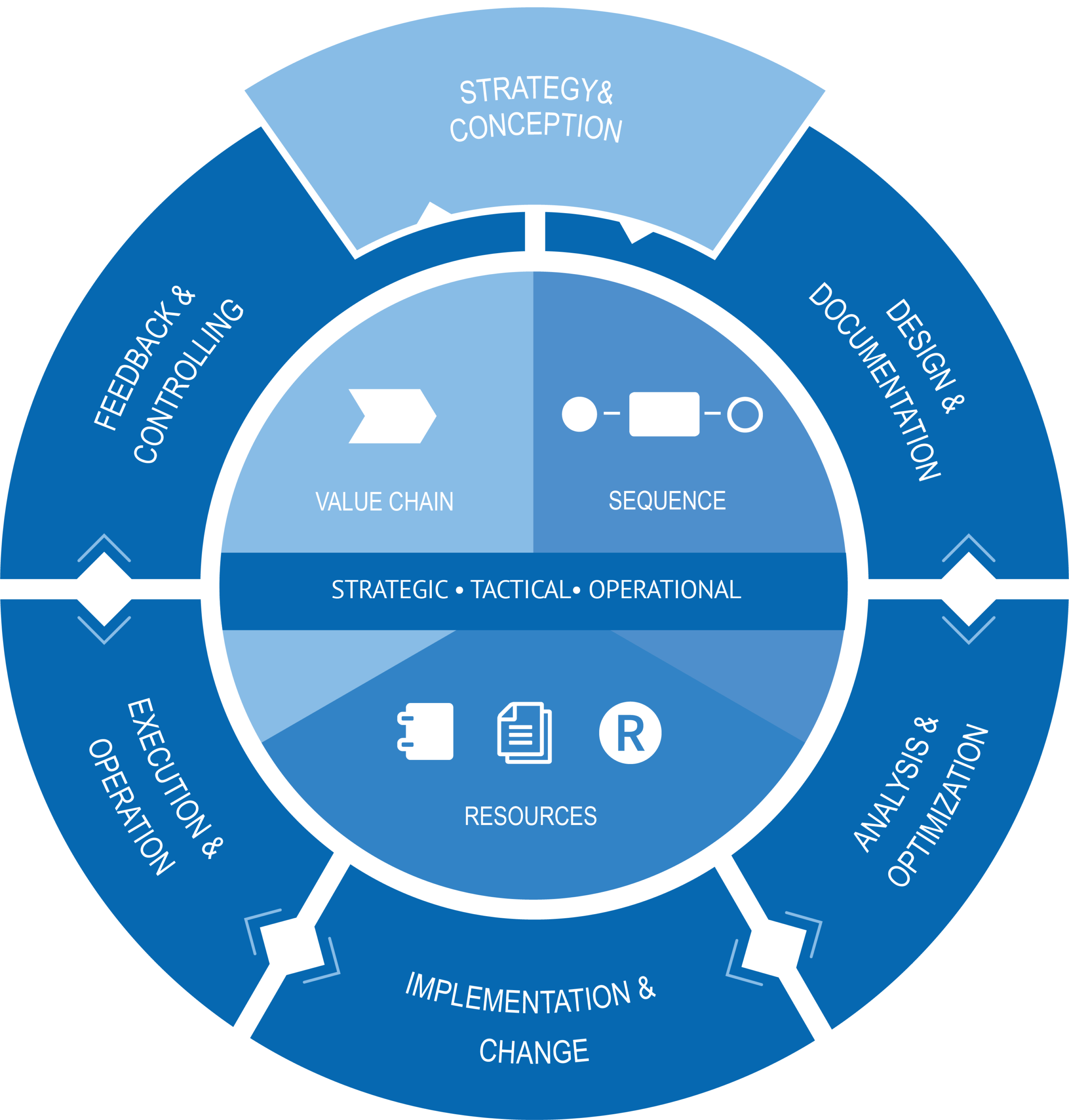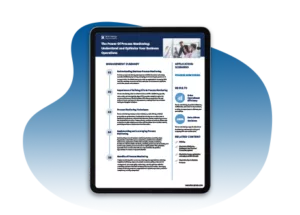Introduction
In today’s fast-paced business environment, change is inevitable. Whether it’s adapting to a new technology, shifting market trends, or updating operational processes, organizations that fail to embrace change, risk falling behind their competition. However, implementing operational changes can be a daunting task, particularly if the process at hand is poorly managed or employees show resistance.
To ensure your organization is able to successfully implement new processes, this blog post will explore key strategies for managing change, overcoming resistance and ensuring a smooth transition to make transformation a positive experience for everyone involved.
What is process implementation?
Process implementation is about putting new or changed processes into practice and making sure that they’ve been validated and tested to ensure smooth operation. This is an ongoing activity, of course, since it’s part of a continuous improvement process. Thus, the level of detail of processes at hand plays a significant role in the ease of said implementation.
It is a systematic (usually project-like) procedure that guarantees that all involved stakeholders are equipped with the necessary knowledge to ensure the process’ success. It considers input from every stage of the implementation to make sure the end result is feasible and practical.
Process Implementation in the context of the Process Management Life Cycle (PMLC)
Process implementation is a central element in the Process Management Life Cycle (PMLC). The PMLC is a framework that describes the stages of process development – from the initial discovery of a need for change, to the final implementation and ongoing monitoring of the process. It typically follows on released to-be processes. Hence, process implementation falls into the third phase of the Process Management Life Cycle, the Implementation & Change phase.
To learn more about the PMLC framework, check out our blog post on Business Process Management. Or read up on our Process Documentation and Process Analysis blog posts for deeper insights into the first two phases.

BOC Group’s Process Management Lifecycle (PMLC)
Why is process implementation important?
Here are some reasons why process implementation is important from an organizational perspective:
Standardization and transparency
By implementing processes, organizations can standardize their operations and ensure that everyone involved is working towards the same goals. This can help reduce confusion, errors and misunderstandings.
Efficiency
Clear and effective processes can help to streamline work and reduce the amount of time and effort required to complete tasks. This can help to increase productivity and reduce costs.
Continuous improvement
Effective process implementation involves monitoring and evaluating processes on an ongoing basis to identify areas for improvement. This can help organizations to continually improve their operations and stay competitive.
Employee engagement
As employees understand their roles and responsibilities within a clear and defined process, they are more likely to feel engaged and invested in their work. This can lead to higher job satisfaction and employee retention.
Overall, process implementation is important to organizations because it can help create a more organized, efficient and productive workplace, which can lead to increased profitability and long-term success.
Process implementation in 6 simple steps
When focusing on process implementation, the most important steps will depend on the specific process or task that needs improvement. However, there are some general steps that can be useful when implementing any process:
Step 1. Identify the process
Step 2. Analyse the current state
Once you have identified the process, it is important to analyse the current state. This includes documenting the current process, identifying bottlenecks or inefficiencies, and gathering feedback from employees involved in the process. This analysis forms the basis for future improvements.
Step 3. Design the new process
Based on the as-is analysis, you can design a new process that eliminates the identified problems and inefficiencies. It is important to involve the people who will be responsible for implementing the new process in this step, as they can provide valuable input and feedback.
Step 4. Communicate the change
Once the new process has been designed, it is important to communicate the change to all stakeholders. This includes the employees who will be affected by the change and any customers or suppliers who may be impacted. Communication should be clear and consistent and address any concerns or questions stakeholders may have.
Step 5. Implement the new process
Once the new process has been designed and communicated, it is time to implement it. This includes training employees on the new process, updating any required documentation or systems, and making sure everyone understands their roles and responsibilities. It is important to closely monitor the implementation process to identify any problems and make adjustments as necessary.
Step 6. Evaluate and improve
Once the new process has been implemented, it is important to evaluate its effectiveness and identify areas for improvement. This should be an ongoing process, with regular checks to evaluate the process and gather feedback from employees and other stakeholders.
It is worth considering that some of the steps may need to be repeated and the implementation of the process is not linear, but rather iterative to achieve the desired result.
Which framework conditions need to be considered in process implementation?
As highlighted earlier, a structured and well-planned process implementation has a great impact on the organizational and social conditions of an organization. Therefore, it is also management’s responsibility to achieve a high level of acceptance among all stakeholders.
Since process implementation often affects an entire organization, the way it is implemented is very important. Typically, a distinction can be made between abrupt, gradual and parallel implementation. To decide on one of the methods, these are some framework conditions that need to be taken into account:
- Economic framework conditions
Referring to the project budget available for the process implementation.
- Organizational framework conditions
It is important to pay attention to the organizational structure, as it has a great influence on the success of process implementation.
- Technical framework conditions
Raising the question of which IT applications are used or should be used.
- Sociological/cultural framework conditions
Corporate culture also plays an important role in deciding how to approach process implementation.
- Personal framework conditions
The focus is on personal experiences of the individual participants and how these can be used.
Key factors for a successful process implementation
Considering all these framework conditions, the following success factors, are crucial for a successful process implementation:
Identification of the addressees
This is one of the essential points, as it should be quite clear who should be informed about the process implementation or who is involved. All addressees – depending on how they are affected – require a different level of information. A distinction can be made between directly affected task owners, not directly affected task owners, relieved parties and suppliers and customers.
Timing
Timing is also a particularly important factor. This can vary greatly and depends above all on the above-mentioned form of implementation. It is also important that the schedule is continuously reviewed throughout the implementation and adjusted if necessary.
Personnel design
Since process implementation is usually handled like a project, it is typically composed of a project manager and project staff. Precise areas of responsibility must be defined so that everyone can fulfill their tasks and a good overall result is achieved.
Forms of involvement
Based on the identified addressees, it is a matter of deciding how much who is involved in the implementation. The three factors of information, communication and participation play important roles in this context. Information describes the understanding that a change is happening and thus aims at a general awareness. Communication describes more the direct exchange of information and participation has the goal of getting all those affected on board and involved in the process.
Specified media
This is about the choice of the medium to be used in the process implementation. Of course, this can vary strongly depending on the organization and organizational culture. The important thing in this respect is to select the medium that makes sense at the time in question.
Interaction
Interaction is about integrating and communicating with the respective addressees at the right time of implementation. Feedback and suggestions for improvement should also be obtained, since the addressees are the ones who ultimately come into contact with the change in the organization on a daily basis.

Benefits of a successful process implementation
Implementing new processes in the workplace can help your business in a variety of ways by providing greater transparency and quality, and ensuring that every employee knows how to approach certain tasks:
Business strategy
By implementing clear processes and responsibilities you can support the development and execution of your company’s business strategy.
Quality control
Process implementation can support the development and execution of quality control procedures to ensure product and service consistency.
Customer service
By implementing processes that focus on meeting customer needs and training your employees accordingly, organizations can improve their customer service.
Supply chain management
Process implementation can support the optimization and streamlining of supply chain operations.
Human resources management
New process implementation can support the development and execution of human resources policies and procedures.
Financial management
Implementing processes can support the development and execution of financial management processes, such as budgeting and financial reporting.
Risk management
New process implementation can support the identification and management of risks to the organization.
Compliance
Implementing processes can support compliance with relevant laws and regulations.
Who should be involved in implementing processes?
Many different people may be involved in implementing processes. Depending on the size and complexity of the organization, different roles may have different responsibilities, and some roles may have multiple responsibilities too. The involvement of top management is likewise critical, as they must justify why changes are being made in their organization.
These roles are usually particularly important:
- Process owner
The process owner is responsible for the overall success of the process and ensures that the process is consistent with the organization’s goals.
- Change management team
The change management team is responsible for communicating process changes to relevant stakeholders, providing training and support, and managing resistance to change.
- IT/Technology team
The IT/Technology team is responsible for implementing all technology solutions required to support the process, such as software or systems.
- Operations/Execution team
The operations or execution team is responsible for executing the process on a day-to-day basis and ensuring that it is working as intended.
Summary
Effective process implementation is key to establish a productive and efficient workplace. Proper change management, including clear communication, proper planning, and a focus on continuous improvement will help secure the desired success of the process implementation initiative.







